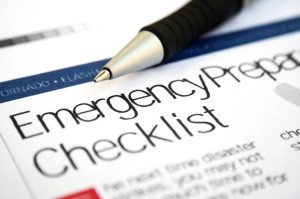The last decade has placed and the next decade will continue to place Hospital and Healthcare stakeholders at great risk. An increasingly hostile environment posed by the triple threats of Evolving Infectious Diseases, More Frequent and Robust Natural Disasters and Violence in the Healthcare workplace from a Hobbesian Culture, Potential for Civil Unrest, and Geopolitical, State and Non-State Terrorism all contribute this increasingly dangerous environment.
The American College of Healthcare Executives (ACHE), one of the Nation’s most powerful and influential institutions for shaping behavior for those who run the country’s Hospitals and Healthcare organizations, has failed to advocate for a robust s strategy for Homeland Security Healthcare Preparedness.
 Repeated failures in early attempts to attract its membership to participate in all-hazards professional education programs discouraged any meaningful future offerings. The Post-Cold war call for the industry to prepare for Weapons of Mass Destructions (WMD) has its roots in the concern that the feared WMDs may well fall into the hands of known and/or unknown non-state terrorists.  President Reagan’s November 1988 Executive Order 12656 tasked the Department of Health and Human Services (DHHS) to develop a plan to mobilize the nation’s healthcare industry to meet the challenges posed by these threats.
Repeated failures in early attempts to attract its membership to participate in all-hazards professional education programs discouraged any meaningful future offerings. The Post-Cold war call for the industry to prepare for Weapons of Mass Destructions (WMD) has its roots in the concern that the feared WMDs may well fall into the hands of known and/or unknown non-state terrorists.  President Reagan’s November 1988 Executive Order 12656 tasked the Department of Health and Human Services (DHHS) to develop a plan to mobilize the nation’s healthcare industry to meet the challenges posed by these threats.
Weapons of mass destruction, Chemical, Biological, Radiological, Nuclear and Explosives with or without radioactive materials, still pose a realistic threat from non-state actors, however an emerging threat includes sovereign state actors. In response to the escalating danger, post-Hurricane Katrina Natural Disasters and Pandemics were added to WMD to form All-Hazards Readiness.
Events over the last two decades are rich with evidenced-based material which would convince any organization that we are living in a hostile environment and should be preparing for measures to reduce our vulnerabilities: the tower bombings, the Oklahoma City bombings, 9/11, hurricanes and tropical storms, tornadoes, derechos, floods, earthquakes, etc. all point undeniably to the need for higher levels of readiness within the public health and healthcare sector.
There is little evidence that the ACHE leadership or collective membership see these all-hazards threats as priority issues. Feedback from yearly surveys of the membership reflect that it is hard for all-hazards to make 1% on the perceived most important challenges they face as Chief Executive Officers.
These are not just the run-of-the –mill Healthcare Administrators – they run the system, and:
- Patients depend on them to provide for a safe and secure locus of care.
- Employees depend on them to keep them safe from workplace violence and other hazards.
- Investors depend on them for fiscal stewardship.
- Board members/trustees depend on them to protect their reputations and keep them out of jail.
- Communities depend on them to make informed decisions which facilitate their care in times of crisis. Â
A good example of this lack of interest or advocacy for all hazards readiness is starkly demonstrated by the lack of material concerning this issue in the 2013 Congress on Healthcare Leadership and Seminar themes; even on the heels of Sandy, there does not seem to be any push towards becoming better prepared.
 In the ACHE Strategic Plan for 2012 – 2014, there are no specific references to All-Hazards Readiness concerns, and none of the “Hot Topics†presented include interest in All Hazards Preparedness; four months after Hurricane Sandy mirrored the same vulnerabilities to Hospitals and Nursing Homes which led to the avoidable death and suffering of over 300 inpatients during and after Hurricane Katrina. A close reading of the ACHE Strategic Plan for 2012-2014 shows little intent to remedy this gap in patient/caregiver threat reduction. Furthermore, there are 6 references to Ethics in the Leadership Goals section of the report; our question is: Where does the protection of our most vulnerable populations (inpatients and those devoted to their care) fall within this ethical framework?
In the ACHE Strategic Plan for 2012 – 2014, there are no specific references to All-Hazards Readiness concerns, and none of the “Hot Topics†presented include interest in All Hazards Preparedness; four months after Hurricane Sandy mirrored the same vulnerabilities to Hospitals and Nursing Homes which led to the avoidable death and suffering of over 300 inpatients during and after Hurricane Katrina. A close reading of the ACHE Strategic Plan for 2012-2014 shows little intent to remedy this gap in patient/caregiver threat reduction. Furthermore, there are 6 references to Ethics in the Leadership Goals section of the report; our question is: Where does the protection of our most vulnerable populations (inpatients and those devoted to their care) fall within this ethical framework?
The author is not a casual observer of the healthcare system; having 50 years of hands-on experience in healthcare delivery and having been a Fellow in the organization since 1988 (FACHE), these observations are not new and have been repeatedly raised with all levels of ACHE leadership over many years, and have intensified with the level of increased threat. Unfortunately, over the past thirty years, the delivery of healthcare has morphed from its’ altruistic roots, into a bottom-line commercial and insensitive enterprise. This is not to say there are not altruistic stakeholders in the system, however they have limited impact on the manner in which healthcare is delivered.
There are some who think that the organization has lost its sense of direction thereby losing its former clear-eyed vision, abandoned its patient-centered mission and diluted its values along the way.






0 Comments